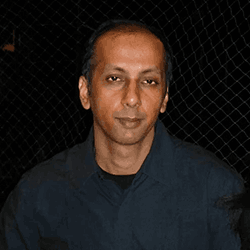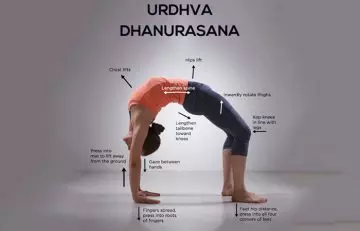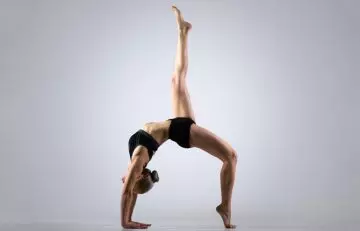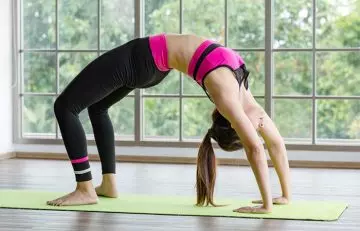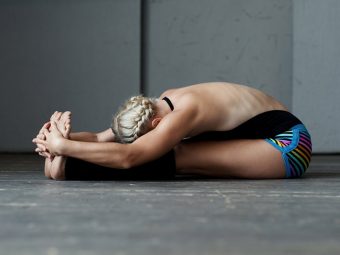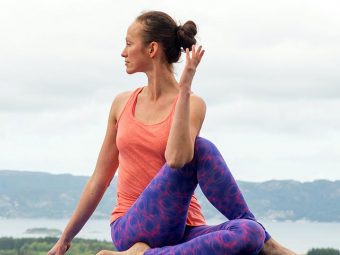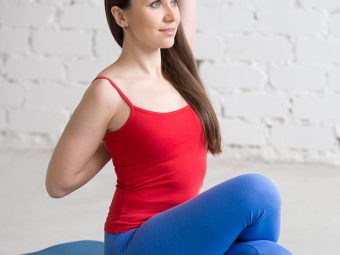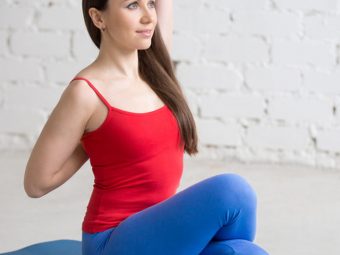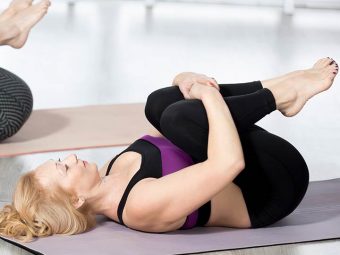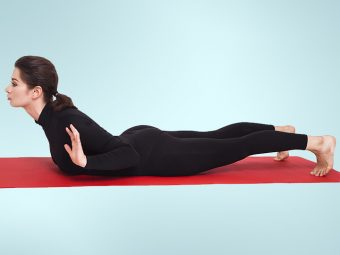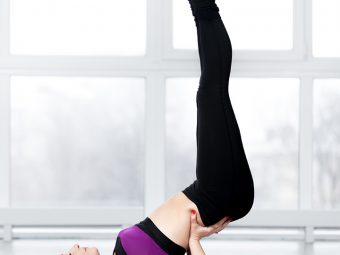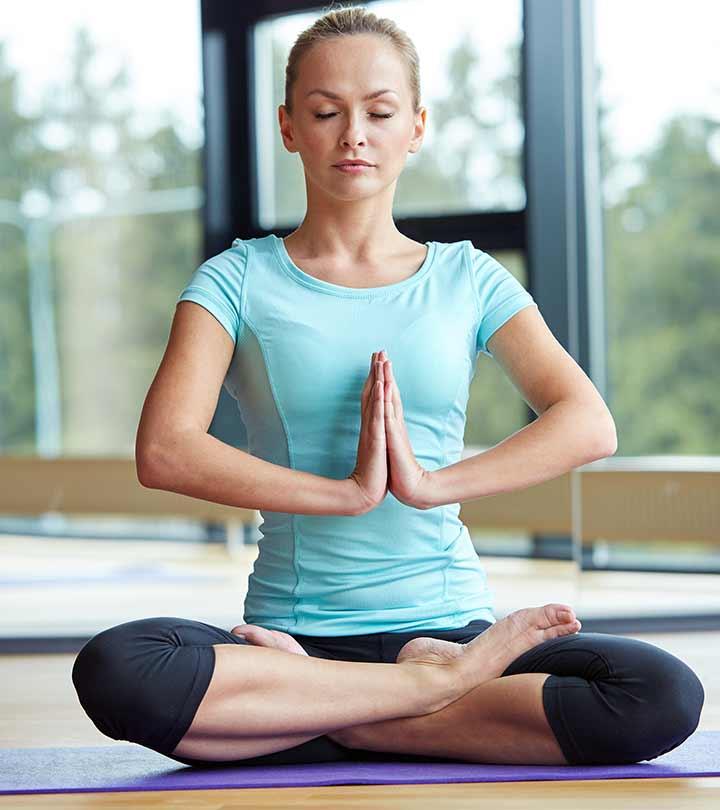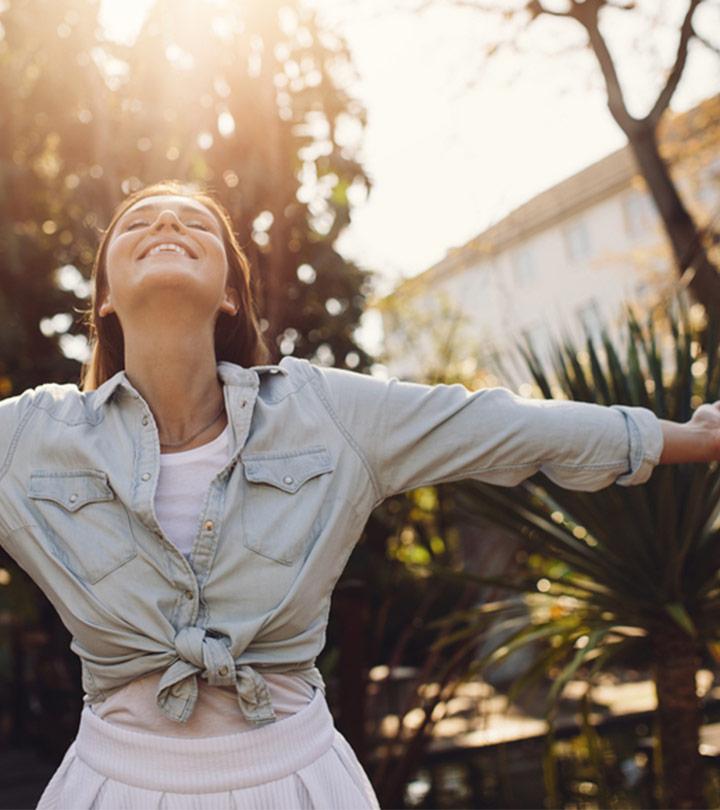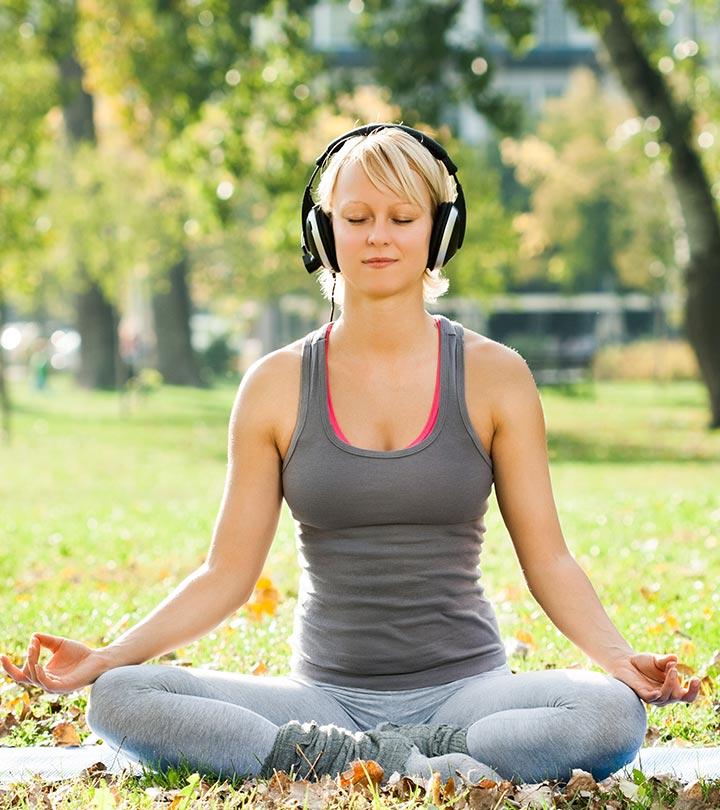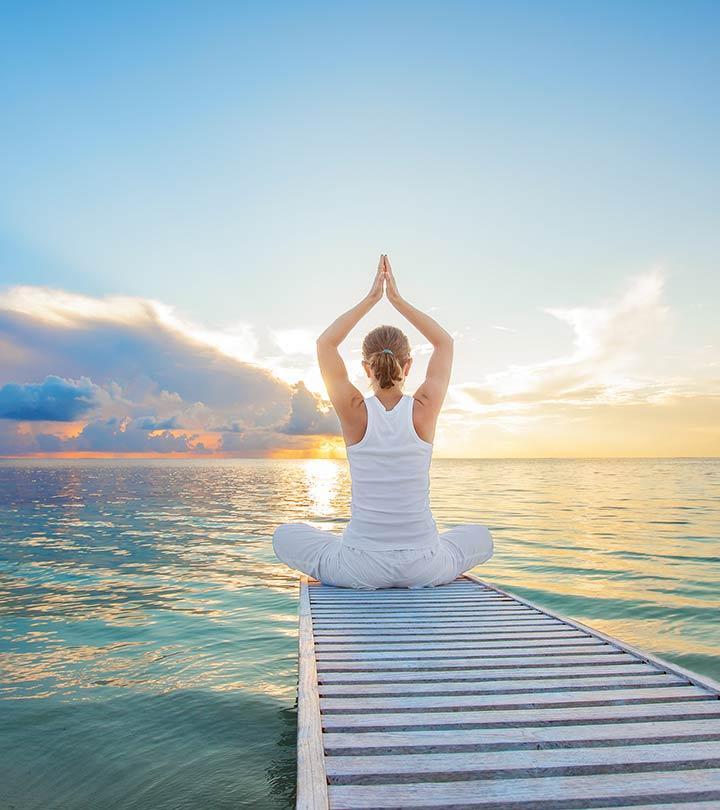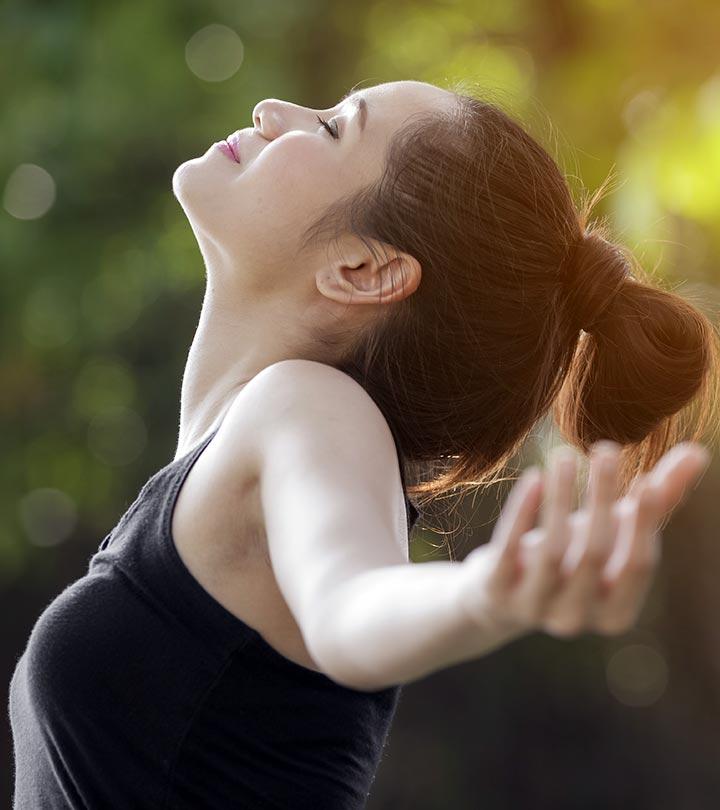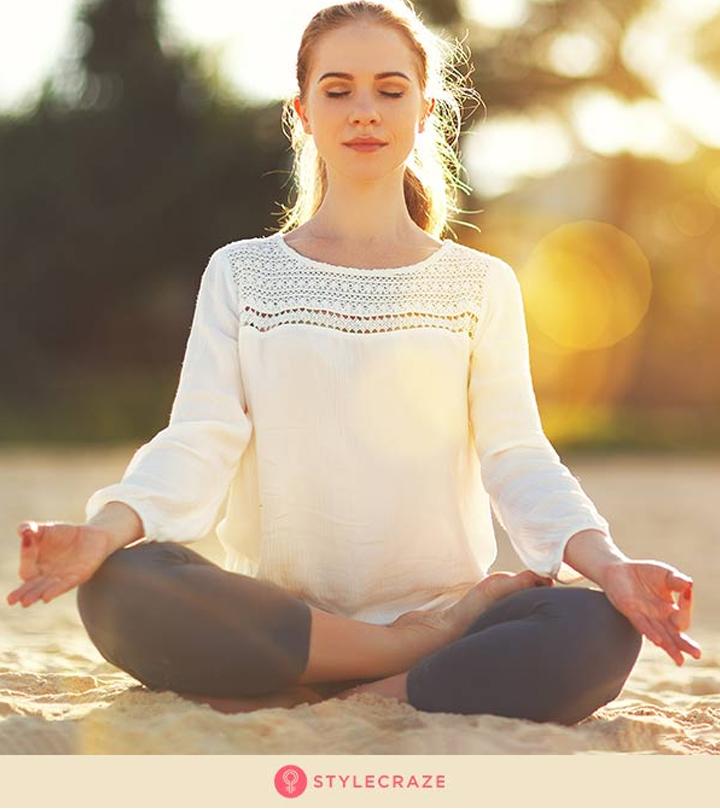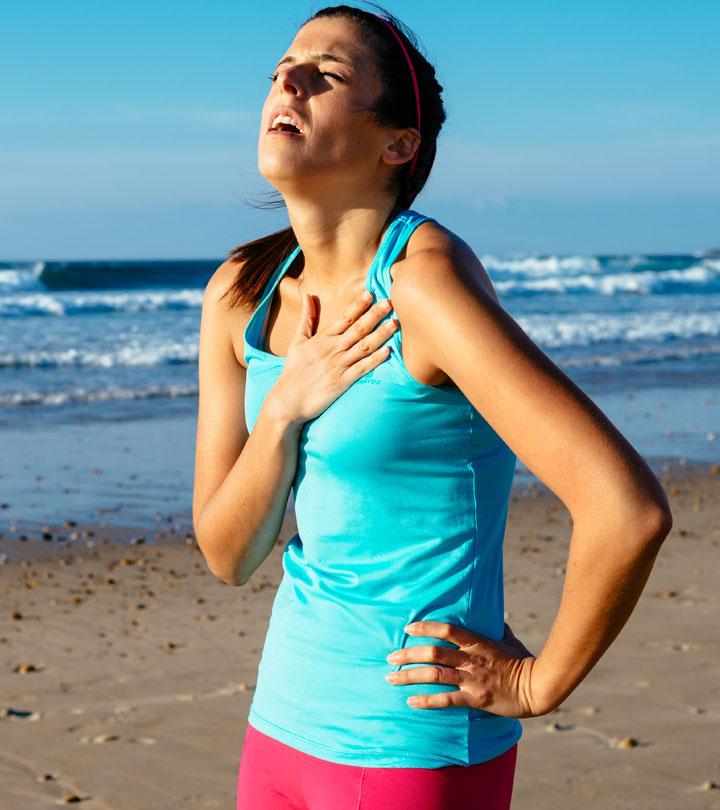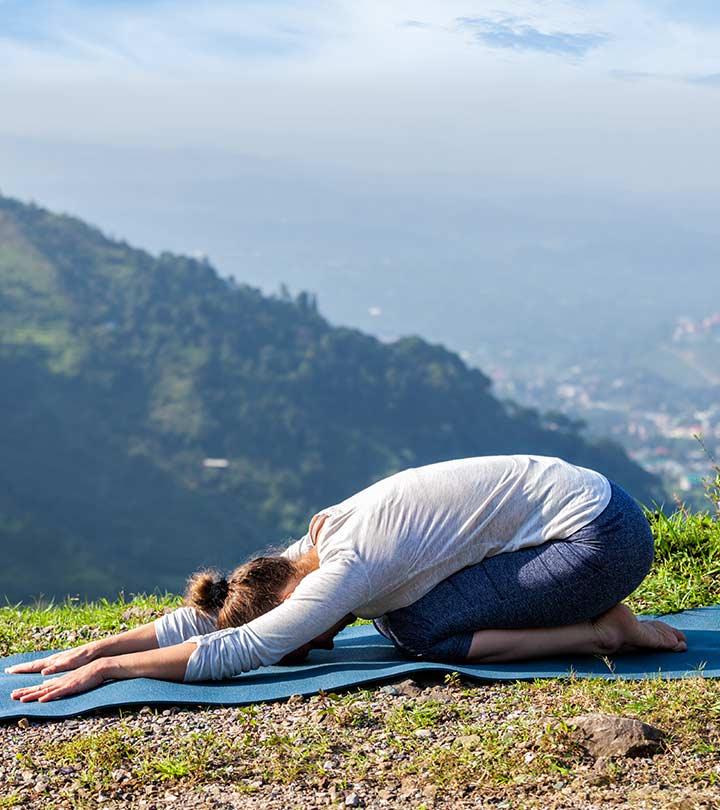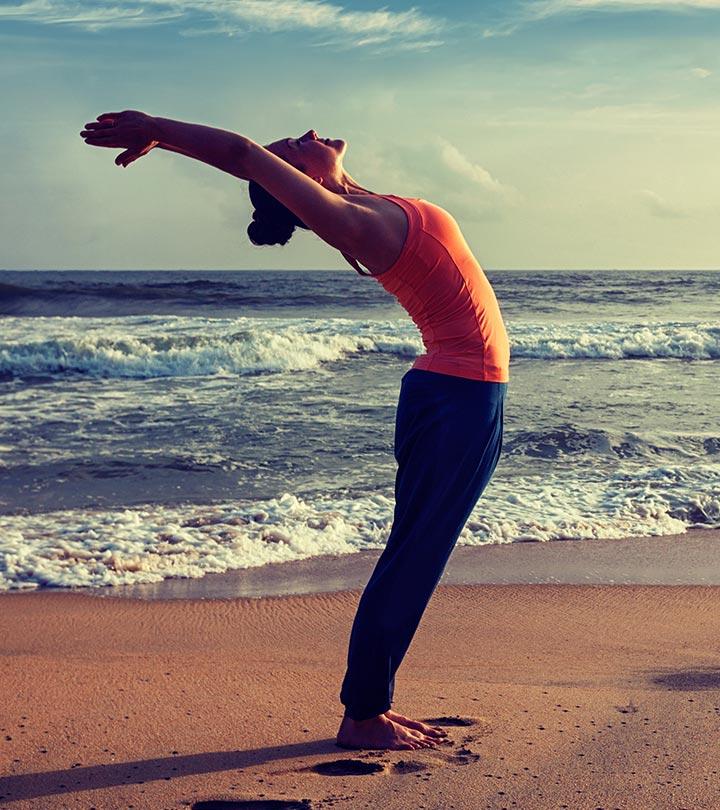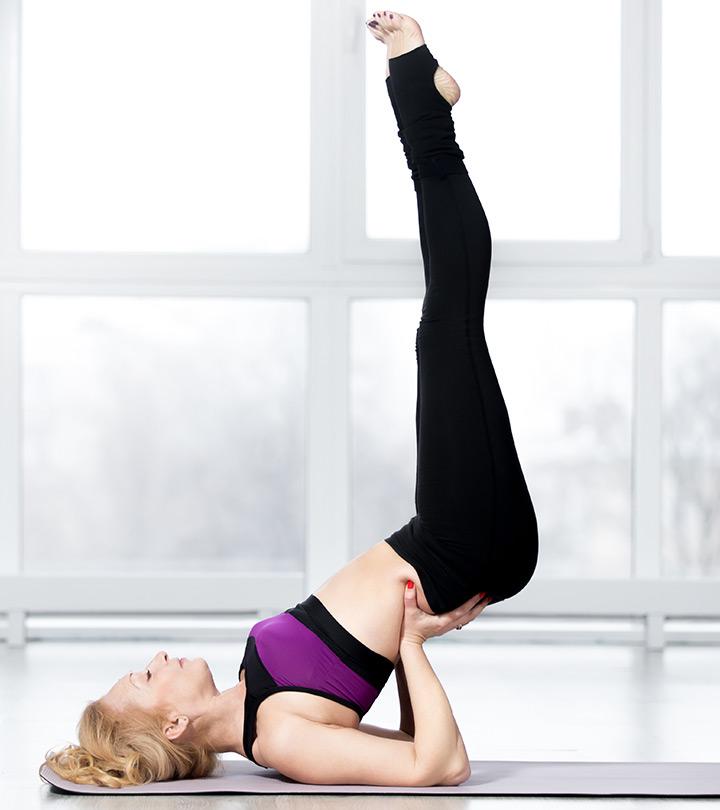Chakrasana: Benefits, How To Do, And Precautions
Simple tips to help your body experience the positives of practicing this powerful pose.
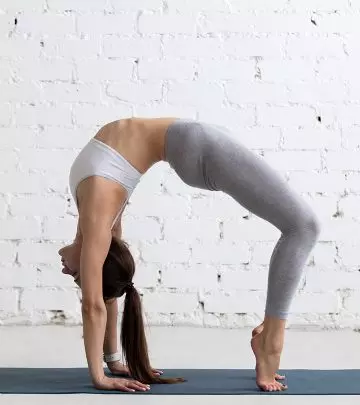
Image: iStock
Chakrasana, also called Urdhva Dhanurasana, is an asana. Sanskrit: ऊर्ध्वधनुरासन; Urdhva – Upward, Dhanur – Bow, Asana – Pose; Pronounced As – OORD-vah don-your-AHS-anna
The chakrasana is a backbend yoga position and a part of an Ashtanga Yoga routine’s trailing off activities. It is also known as the Upward Facing Bow Pose. When assumed, the stance resembles a wheel or an upward facing bow. This asana is noted for improving the spine’s flexibility. When performed as part of an acrobatic routine, it is known as the back bridge. In this article, we have detailed chakrasana yoga and other related issues. Continue reading to know more.
 Did You Know?
Did You Know?In This Article
Everything You Need To Know About The Chakrasana
What You Should Know Before You Do The Asana
This asana must be performed only when your stomach and bowels are empty. It is best to have a meal at least four to six hours before your practice so that the food is digested well and you have gained enough energy for the workout.
It is best to practice yoga and meditation in the morning. But in the event you cannot manage to take out time in the morning, you can do it in the evening as well.
Level: Basic
Style: Hatha Yoga
Duration: 1 to 5 minutes
Repetition: None
Stretches: Abdomen, Thorax, Lung
Strengthens: Back, Legs, Arms, Vertebral column, Abdomen, Buttocks, Wrists
How To Do The Urdhva Dhanurasana (Chakrasana)
- Lie flat on your back on the floor. You may bend your knees so that the soles of your feet are on the floor and closer to your buttocks. Make sure that your feet are hip-width apart.
- Your hands must be placed behind your shoulders, ensuring your fingers are opened up and pointed towards your shoulders.
- Once you feel comfortable in this stance, balance your weight on your limbs. Then, press your feet and palms, and lift your entire body off the mat. Let your head hang gently. Your neck should be long.
- Focus on your breath (prana) and breathe comfortably. Take slow, deep breaths.
- Hold the pose for a minute, or as long as you are comfortable. Then, release by bending your arms and legs, and gently lowering your back on the ground. Lie down in Shavasana for a few minutes before you resume normal activity or continue with your exercise. Being involved in this pose will help in promoting mindfulness.
Precautions And Contraindications
These are some points of caution you must keep in mind before doing this asana.
- It is best to avoid this asana if you have tendonitisi XA condition in which the thick cords that join your muscles to your bones, called tendons, get inflamed. in the wrists or carpal tunnel syndrome.
- If your lower back starts to hurt due to the extension, immediately come out of the pose. Make sure you drive the posture the glutes and the thoracic spine.
- You must steer clear of this asana if you have a shoulder impingement.
- Do not do this asana if you suffer from headaches or high blood pressure.
Beginner’s Tips
As a beginner, when you do this pose, you will find your feet and knees splaying as you lift your body to assume this pose. This will tend to compress your lower back. So, you can use a strap on your thighs to keep them hip-width apart throughout the asana.
If you need to keep your feet in place, use a block between them such that the sides of the big toes press the edges of the block.
Advanced Pose Alterations
To intensify the pose, you can do the Eka Pada Urdhva Dhanurasana. For this, once you get into the Wheel Pose, move your weight on one foot. Then, as you exhale, bend the other foot at the knee, and pull it into your torso. Exhale and stretch it out upwards. Hold the pose for a few seconds, and then bring your heel to the floor as you exhale. Repeat using the other leg.
Now, let’s look at the benefits of chakrasana in more detail.
 Did You Know?
Did You Know?The Benefits Of The Upward Facing Bow Pose
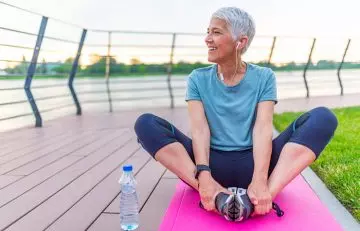
These are some amazing benefits of chakrasan:
- It gives your lungs and chest a good stretch. It also expands the shoulders and the chest.
- This asana also gives strength to your legs, abdomen, buttocks, spine, shoulder blades, glutes, hamstringsi XA group of three skeletal muscles that run down the back of the thigh from the hip to just below the knee. , lower back, wrists, and arms.
- It is known to stimulate the pituitary and thyroid glands.
- Practicing this asana also gives a good stretch to your hip flexors, your core, and your wrist flexors and improves your overall fitness levels.
- It is known to give relief to some lower back pains.
- It cures infertility, asthma, and osteoporosisi XA form of arthritis in which the protective tissues at the joints of the bones wear down gradually and worsen over time. .
- It connects your body and soul and improves your health and wellness. also relieves stress and reduces depression, and makes you feel energetic and full of life.
The Science Behind The Chakrasana (Urdhva Dhanurasana)
Like most other yoga asanas, this one also works on our mind, body, and emotions. This asana encapsulates the whole essence of back bending and moves you towards joy and fearlessness and is a boon for people experiencing brain fog or related mind afflictions.
It is known to enhance the vital force that surrounds your heart and the distributive force that is all over your body (pran and vyana), therefore helping you become more aware of things and also building the courage to battle any challenge that comes your way.
This asana focuses on flexing the frontal part of the body that includes the shoulders, the intercostal musclesi XThe muscle groups situated in between the ribs that help shrink and expand the size of the chest cavity. , the wrists, the hip flexors, and the quadricepsi XA group of four muscles on the front of the thigh that are instrumental in walking, kicking, running, jumping, and squatting. . It also imparts strength to the shoulders, sacrum, wrists, and arms, and makes them more stable. If done correctly, it also helps to rotate the thighs and arms and also engage the hamstrings.
Anita Bokepalli, a YouTuber, explains how she trained herself to attain the Chakrasana: “The trick is to give yourself the time you need to prepare, practice, and be patient till you reach your goal (i).” It took her 2–3 minutes of practice every day for 30 days.
Preparatory Poses
Setu Bandha Sarvangasana
Urdhva Mukha Svanasana
Virasana
Follow-Up Poses
Ardha Matsyendrasana
Supta Padangusthasana
Infographic: A Step-By-Step Guide To Chakrasana
The Chakrasana may seem difficult to do, but it is not impossible. With consistent practice and good balance, you can perform it effortlessly. However, you need to do each step carefully to avoid injuries. Check out the infographic below to learn how to properly do the Chakrasana.

Illustration: StyleCraze Design Team
Chakrasana is a backbend yoga pose included in the Ashtanga Yoga routine’s trailing off courses. This asana has many health benefits. It should only be done if your bowels and stomach are empty. The frontal region of the body, including the intercostal muscles, shoulders, hip flexors, wrists, and quadriceps, are flexed in chakrasana yoga. This asana also provides more strength and stability to the sacrum, shoulders, arms, and wrists. Not just physical fitness, this asana also helps to develop one’s spirituality. Even though it is considered a basic asana, it is exceedingly difficult to perform. However, it can make you stronger, more empathetic, brave, and cheerful if done correctly and regularly.
Frequently Asked Questions
Can we do Chakrasana daily?
Yes, you can do Chakrasana daily as it can reduce stress and strengthen your eyesight (1).
Does Chakrasana reduce belly fat?
Yes, Chakrasana may help burn fats from the abdominal area (1).
Why is Chakrasana difficult?
Chakrasana can be challenging to perform as it requires immense shoulder strength to lift the body.
How many times should I do Chakrasana?
You can do Chakrasana 12 times. But make sure that the posture is proper and that you are breathing the right way.
Key Takeaways
- The upward bow or wheel pose is best done on an empty stomach.
- This pose helps relieve mental stress and makes you feel energetic as it gives your body a good stretch.
- It also helps strengthen legs and shoulders while reducing lower back pain.
- Avoid doing this pose if you have tendonitis in the wrist, carpal tunnel syndrome, shoulder impingement, or high blood pressure.
Watch this video and learn how to do Chakrasana step by step. Discover the benefits of this wheel yoga pose and get ready to feel energized and refreshed.
Personal Experience: Source
StyleCraze's articles are interwoven with authentic personal narratives that provide depth and resonance to our content. Below are the sources of the personal accounts referenced in this article.
i. How I Learnt to do Standing CHAKRASANA | What Practising YOGA Taught Me | Motivational Video!https://www.youtube.com/watch?v=9y6oKan_mzQ
References
Articles on StyleCraze are backed by verified information from peer-reviewed and academic research papers, reputed organizations, research institutions, and medical associations to ensure accuracy and relevance. Read our editorial policy to learn more.
- Importance of Chakrasana in Present Generation
https://www.ijtsrd.com/papers/ijtsrd25356.pdf

